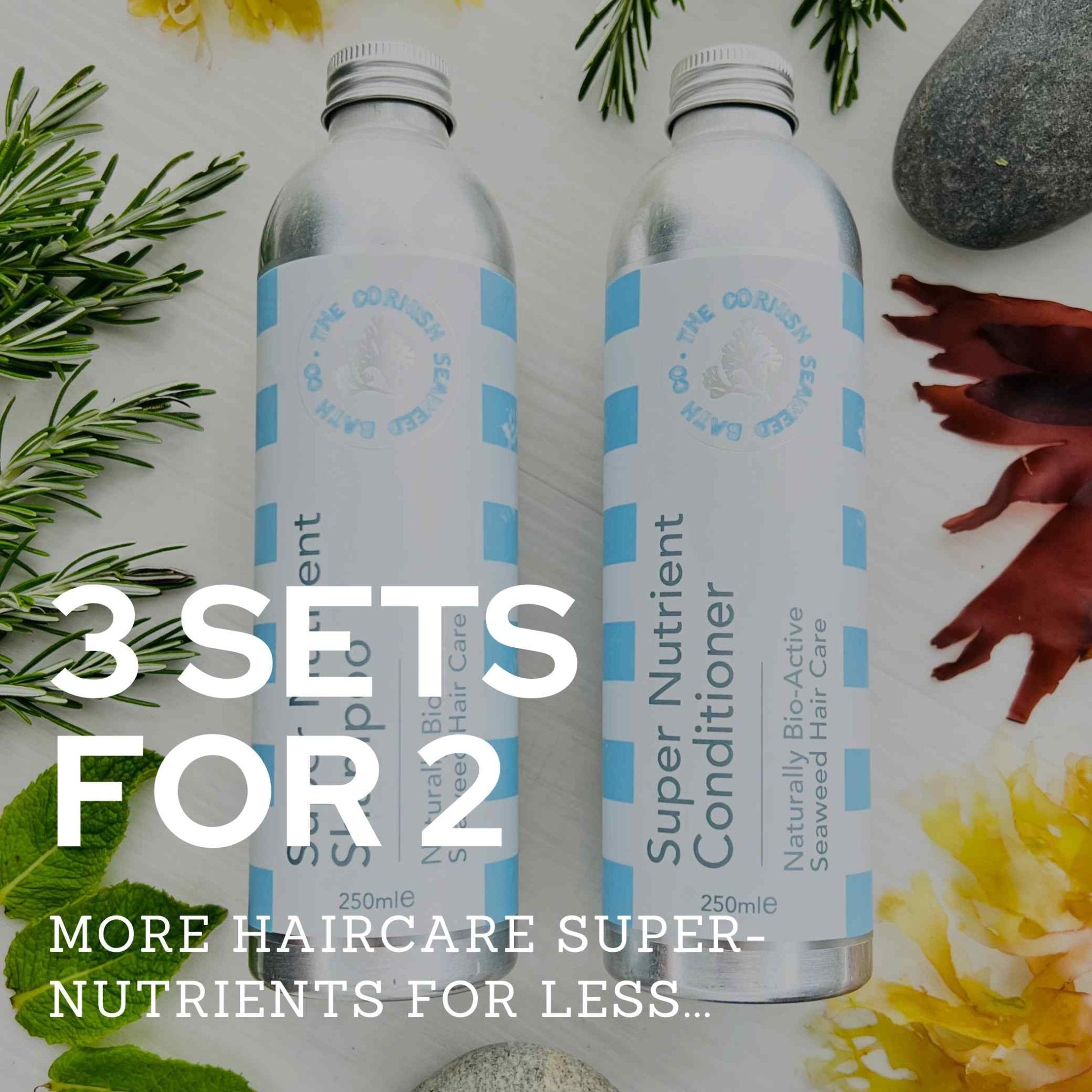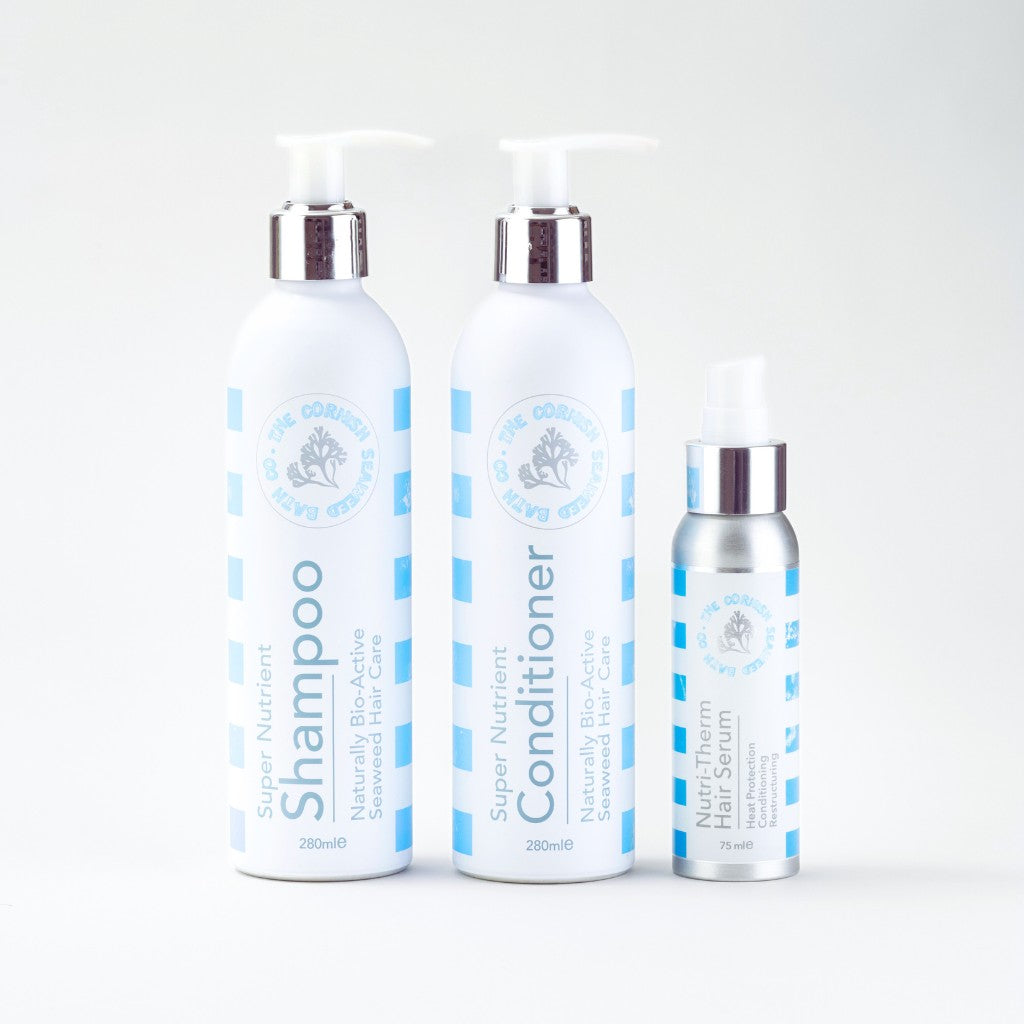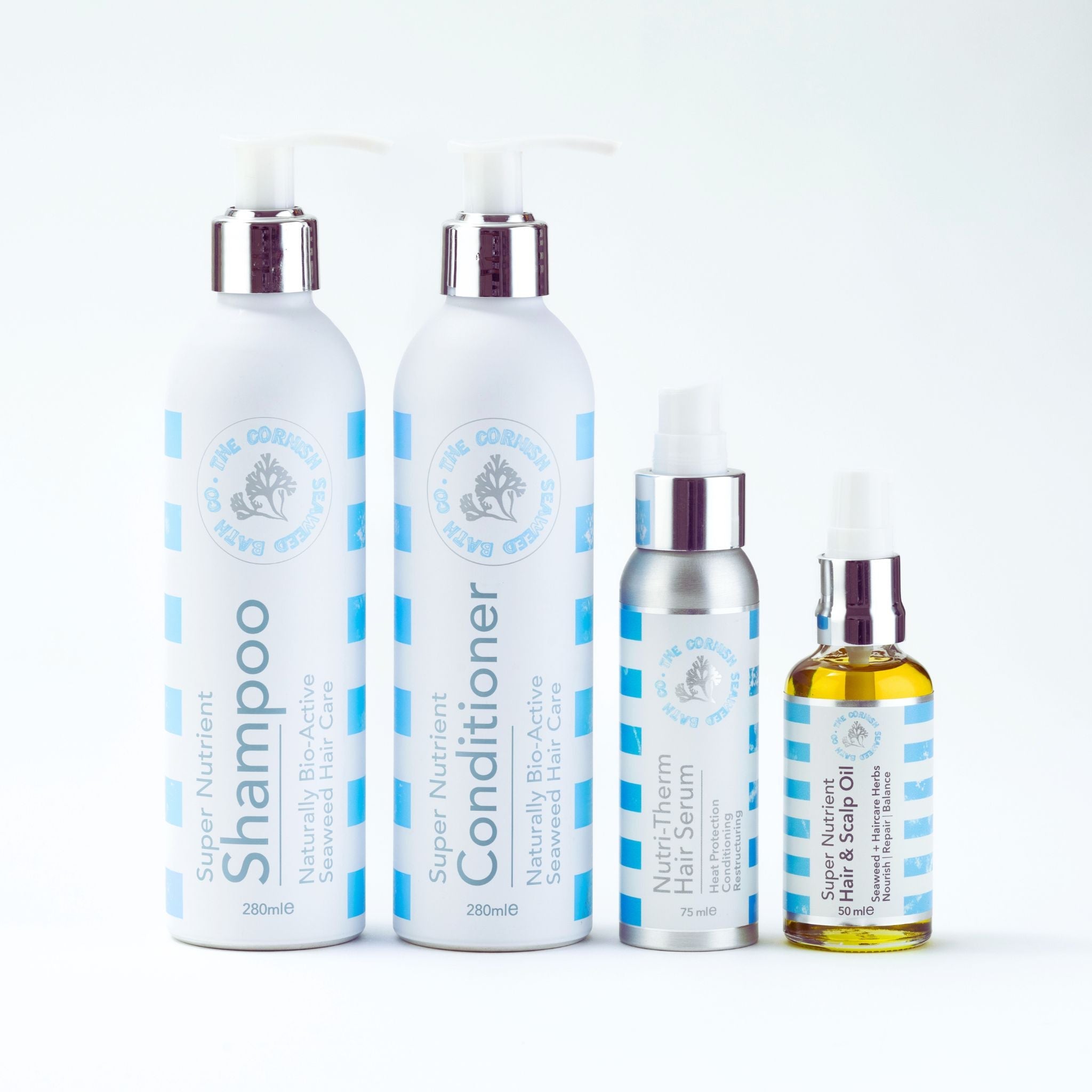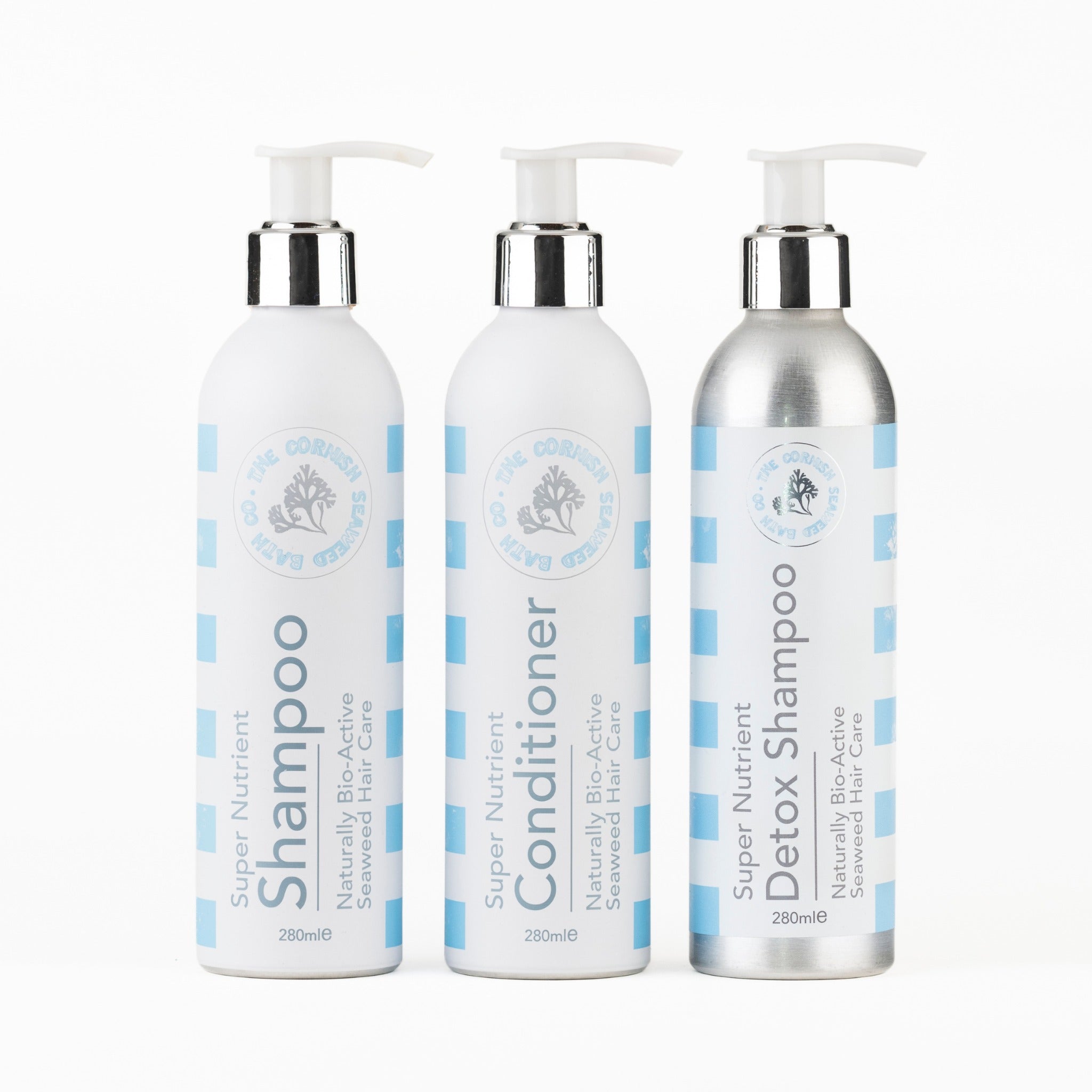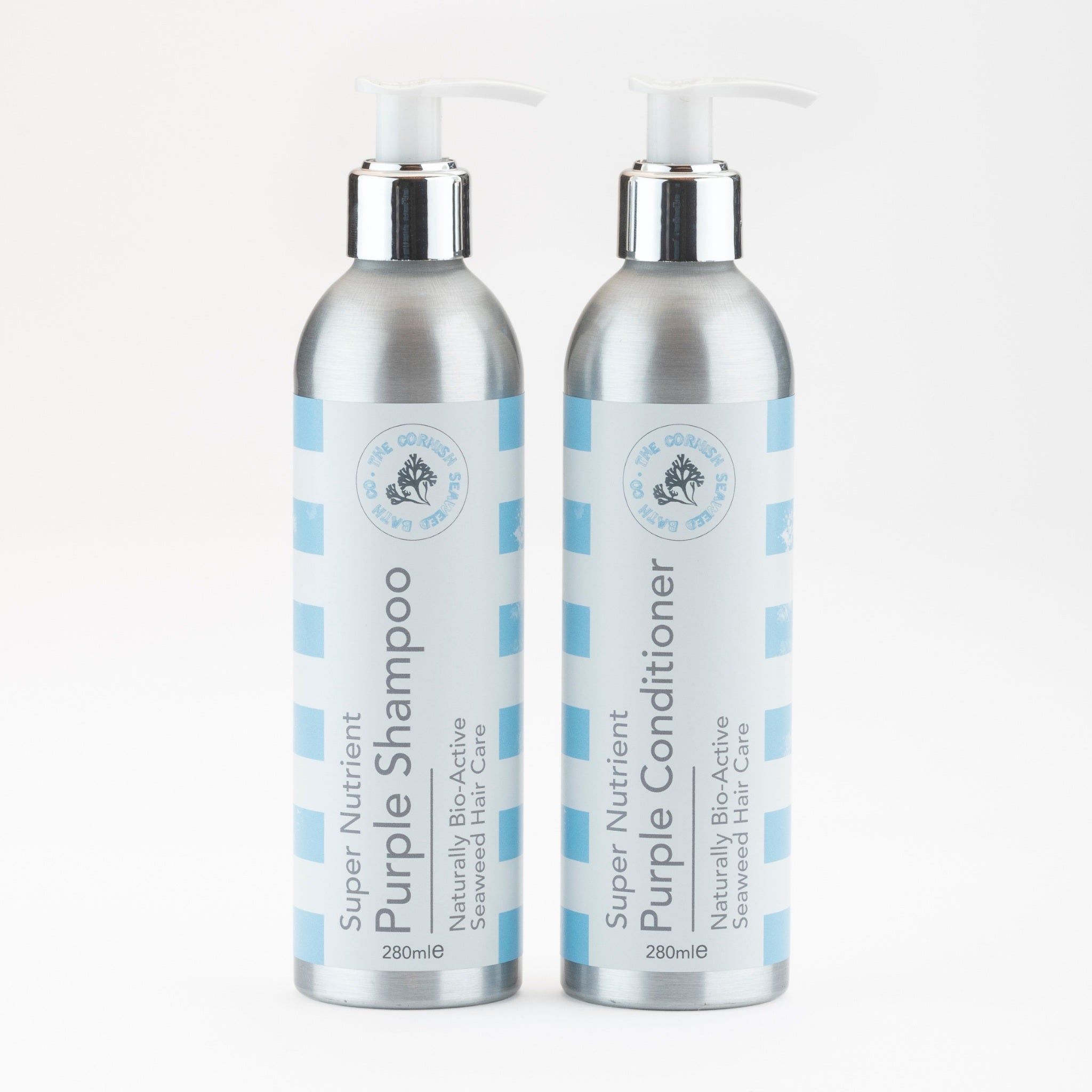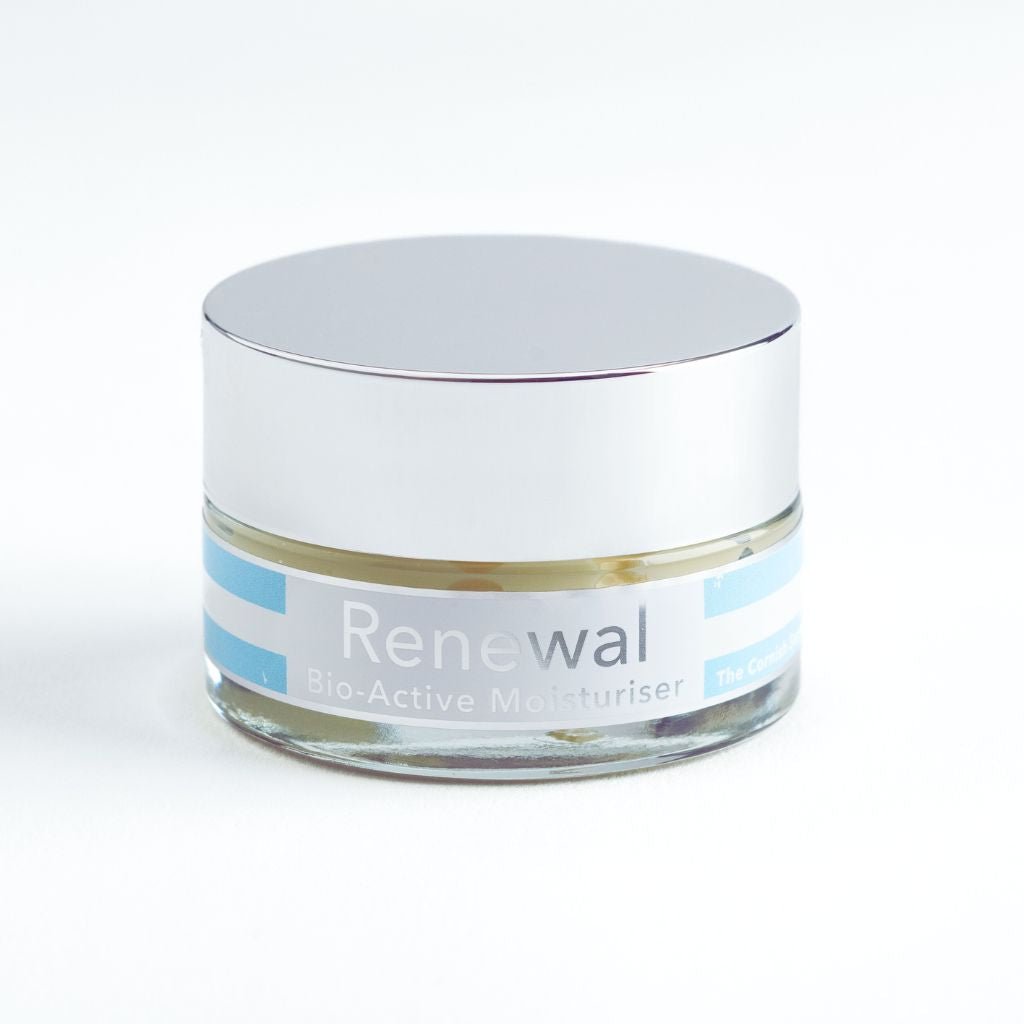Best Facial Cleanser: How to Choose for Your Skin
Key Takeaways
- Choosing the best facial cleanser depends on understanding your skin's unique needs.
- The right cleanser effectively removes impurities without damaging the skin's natural barrier.
- A good cleanser leaves your skin feeling comfortable, not tight or irritated.
- Matching the cleanser's formulation and ingredients to your skin type is essential.
- Selecting textures and ingredients that support your skin's daily rhythm helps maintain healthy skin.
Table of Contents
- What Makes a Facial Cleanser Truly "Best"?
- How to Choose the Best Facial Cleanser for Your Skin
- Comparing the Best, Our Renewal Facial Cleanser vs. Leading Alternatives
- Using Facial Cleansers for Best Results, Routine and Technique
- Best Facial Cleansers by Skin Concern, Who Benefits Most?
- Ingredient Deep Dive, Understanding What's in Your Cleanser
- Your Best Facial Cleansing Ritual: Bringing It All Together
- Specialty Cleansing, Double Cleansing, Exfoliating, & Occasional Treatments
- Sustainable Facial Cleansing: How to Support Your Skin and the Environment
- Expert Insights, Dermatologist & Formulator Tips
Finding the facial cleanser best suited to your skin requires understanding both your skin's unique needs and what makes a cleanser truly effective. The right cleanser removes impurities without stripping your skin's natural protective barrier, leaving your face comfortable rather than tight or irritated. With countless options promising transformative results, the key lies in matching formulation to function, choosing ingredients and textures that support your skin's daily rhythm rather than disrupting it. Renewal Facial Cleanser is a prime example of a gentle yet effective option for daily use.
The most effective cleansers combine gentle yet thorough cleansing action with nourishing ingredients that respect your skin's delicate balance. This means looking beyond marketing claims to understand how different formulations work, which ingredients genuinely benefit your skin type, and how proper application technique can maximise results while minimising potential irritation. For those seeking a complete approach, The Facial Care Set offers a curated regimen for optimal skin health.
If you’re interested in exploring a wider range of natural cleansing solutions, you may want to browse our Cleanse collection for more options tailored to different skin types and concerns.
What Makes a Facial Cleanser Truly "Best"?
A truly exceptional facial cleanser performs multiple functions simultaneously: it removes daily accumulation of impurities, makeup, and environmental pollutants whilst maintaining your skin's natural moisture barrier and pH balance. The best cleansers achieve thorough cleansing without that telltale tight, "squeaky clean" feeling that signals over-cleansing and potential barrier damage.
The definition of "best" varies significantly between individuals based on skin type, sensitivity levels, lifestyle factors, and personal preferences regarding texture and fragrance. Someone with sensitive, dry skin requires a completely different approach than someone managing oily, resilient skin. Environmental factors, such as exposure to pollution, frequent makeup wear, or challenging weather conditions, also influence what constitutes the optimal cleanser choice.
Measuring a cleanser's true efficacy involves observing how your skin feels both immediately after cleansing and throughout the day. Effective cleansers leave skin feeling soft and comfortable, support the absorption of subsequent skincare products, and contribute to overall skin health rather than causing irritation or excessive dryness. Quality formulations achieve this through carefully balanced combinations of gentle surfactants, nourishing oils, and botanicals that work in harmony with your skin's natural processes.
How to Choose the Best Facial Cleanser for Your Skin

Selecting the right cleanser begins with honest assessment of your skin's current condition and daily requirements. Observe your skin's behaviour throughout different times of day and varying environmental conditions. Does it feel tight after washing? Does it produce excess oil by midday? These observations provide crucial information about your skin's needs and tolerance levels.
Identifying Your Skin Type and Its Needs
Determine your skin type through a simple observation test: cleanse your face with a gentle, basic cleanser, then wait two hours without applying any products. Observe how your skin feels and appears. Oily skin will show shine across most areas, dry skin may feel tight or show flaking, combination skin typically shows oiliness in the T-zone with dryness elsewhere, whilst normal skin feels comfortable without excess oil or tightness.
Ingredient Awareness, What to Seek, What to Avoid
Look for cleansers containing nourishing oils like jojoba, olive, or coconut oil, which provide gentle cleansing action whilst supporting skin hydration. Botanical ingredients such as frankincense, rose, and lavender offer additional soothing benefits. Our Renewal Facial Cleanser exemplifies this approach, combining saponified olive oil and coconut oil for effective cleansing with jojoba oil to maintain skin balance, enhanced by frankincense and rose absolute for their calming properties.
Avoid cleansers with harsh sulphates, synthetic fragrances, or high alcohol content, which can disrupt your skin's protective barrier and cause irritation. Instead, choose formulations with biodegradable surfactants derived from plant sources, which cleanse effectively whilst being gentler on both your skin and the environment.
Three-Step Selection Process
Step 1: Match the cleanser to your primary skin type and main concern, whether that's sensitivity, dryness, excess oil, or makeup removal needs. Step 2: Examine the ingredient list for nourishing oils and avoid harsh detergents or synthetic additives that might cause irritation. Step 3: Perform a patch test on a small area of skin, then assess how your skin responds after one week of regular use, looking for improvements in comfort, texture, and overall appearance.
Comparing the Best, Our Renewal Facial Cleanser vs. Leading Alternatives
When evaluating the facial cleanser best suited to gentle, effective cleansing, our Renewal Facial Cleanser stands out through its unique combination of nourishing plant oils, sustainably sourced seaweed, and carefully selected botanicals. This formulation approach prioritises skin comfort and long-term health over aggressive cleansing action.
Our Renewal Facial Cleanser - Botanical Luxury for Sensitive Skin
Best for: Sensitive skin, those seeking natural ingredients, makeup removal, and daily gentle cleansing.
Our cleanser combines saponified olive oil, coconut oil, and castor seed oil with jojoba oil for balanced cleansing that removes impurities whilst maintaining skin hydration. The inclusion of Cornish seaweed (Fucus Serratus) provides mineral-rich support, whilst frankincense, rose absolute, and lavender create a calming, aromatherapeutic experience. This palm-free, sulphate-free formula is 100% natural and biodegradable.
Why it stands out: The cream texture provides thorough cleansing without foaming agents that can strip natural oils. The botanical blend offers both functional and sensory benefits, making daily cleansing feel like a nurturing ritual rather than a chore.
Cetaphil Gentle Skin Cleanser - Minimal Approach
Best for: Very sensitive skin, those preferring fragrance-free formulations, budget-conscious consumers.
Pros:
- Fragrance-free and hypoallergenic
- Non-comedogenic formula
- Widely available and affordable
Cons:
- Contains synthetic ingredients and parabens
- Limited nourishing properties
- Basic plastic packaging
La Roche-Posay Toleriane Caring Wash - Dermatological Focus
Best for: Reactive skin, those seeking dermatologist-recommended products, clinical approach to skincare.
Pros:
- Thermal spring water inclusion
- Dermatologist tested
- Soap-free formulation
Cons:
- Higher price point for synthetic formulation
- Limited botanical ingredients
- Less environmentally conscious packaging
| Feature | Our Renewal Cleanser | Cetaphil Gentle | La Roche-Posay Toleriane |
|---|---|---|---|
| Key Ingredients | Saponified plant oils, seaweed, botanicals | Synthetic surfactants, glycerin | Thermal water, synthetic cleansers |
| Texture | Rich cream | Liquid lotion | Fluid cream |
| Fragrance | Natural essential oils | Fragrance-free | Fragrance-free |
| Sustainability | Biodegradable, recyclable packaging | Standard plastic bottle | Standard plastic packaging |
| Best For | Natural skincare enthusiasts | Minimal ingredient preference | Clinical skincare approach |
Using Facial Cleansers for Best Results, Routine and Technique
Proper application technique significantly impacts your cleanser's effectiveness and your skin's response. The goal is thorough cleansing without over-manipulation or excessive friction that can cause irritation or damage to your skin's protective barrier.
Step-By-Step Cleansing Routine
Apply 1-2 pumps of cleanser to damp skin, using lukewarm water to avoid shocking sensitive skin with temperature extremes. Massage gently over face and neck using circular motions for approximately 30 seconds, allowing the cleanser time to dissolve impurities and makeup. Rinse thoroughly with warm water, ensuring no residue remains, particularly around the hairline and jawline where buildup commonly occurs.
Solutions to Common Cleansing Problems
If your skin feels tight or dry after cleansing, this indicates potential over-cleansing or use of too harsh a formulation. Reduce the amount of product used, shorten massage time, or consider switching to a more nourishing formula. For stubborn makeup or sunscreen removal, use slightly more product and extend massage time rather than increasing pressure, which can irritate skin.
Persistent irritation or redness suggests ingredient sensitivity or technique issues. Immediately discontinue use, return to the gentlest cleanser available, and consider patch testing new products before full-face application. If problems persist, consult a dermatologist for professional assessment.
Special Cases, Post-Exercise, Makeup Removal, Sensitive Days
After exercise or heavy sweating, resist the urge to scrub vigorously. Instead, use your regular amount of cleanser but extend the gentle massage time to 45 seconds, allowing the formula to dissolve salt deposits and excess oils naturally. For heavy makeup removal, consider a two-step approach: use your cleanser first to break down makeup, then repeat with a smaller amount for final cleansing.
During periods of heightened sensitivity, whether due to hormonal changes, weather extremes, or skin reactions, simplify your routine temporarily. Use cooler water, reduce massage time to 15-20 seconds, and ensure thorough but gentle rinsing to avoid leaving any potentially irritating residue.
Morning vs. Nighttime Cleansing
Morning cleansing prepares your skin for daily protection and moisturising, requiring only gentle removal of overnight cellular renewal byproducts and any residual skincare products. Evening cleansing demands more thorough action to remove accumulated impurities, makeup, sunscreen, and environmental pollutants from the day.
Best Facial Cleansers by Skin Concern, Who Benefits Most?

Different skin concerns require specific approaches to cleansing, making the choice of best cleansers highly individual. Understanding which formulation characteristics address your primary concerns ensures optimal results whilst avoiding potential aggravation of existing sensitivities or imbalances.
For Sensitive Skin
Sensitive skin requires cleansers with minimal, gentle botanicals and careful attention to fragrance levels. Look for formulations containing soothing oils like jojoba and olive oil, combined with calming botanicals such as frankincense and rose. Our Renewal Facial Cleanser addresses sensitive skin needs through its combination of nourishing saponified oils and gentle essential oils, providing effective cleansing without harsh surfactants that commonly trigger reactions.
The three most important qualities for sensitive skin cleansers are: non-stripping formulation that maintains the skin barrier, natural rather than synthetic fragrances that are less likely to cause reactions, and biodegradable ingredients that indicate gentler processing methods.
For Dry Skin
Dry skin benefits from cream-textured cleansers containing hydrating oils and emollients that support moisture retention during the cleansing process. Avoid foaming formulations that can further strip natural oils, instead choosing products with nourishing ingredients like coconut oil, jojoba oil, and botanical extracts that leave skin feeling comfortable rather than tight. For more on the differences between foaming and cream cleansers, see our foaming cleanser blog post.
For Makeup Wearers
Regular makeup wearers need cleansers capable of dissolving both water-based and oil-based cosmetics without requiring harsh rubbing or multiple products. Our Renewal Facial Cleanser excels in this area through its oil-based formulation that naturally breaks down makeup whilst the gentle saponification process ensures thorough removal without residue. This makes it ideal as the first step in a double cleanse routine or as a standalone cleanser for lighter makeup days.
| Skin Concern | Ideal Cleanser Characteristics | Our Recommendation | Key Benefits |
|---|---|---|---|
| Sensitive Skin | Gentle botanicals, minimal ingredients | Renewal Facial Cleanser | Soothing oils, natural fragrance |
| Dry Skin | Cream texture, hydrating oils | Renewal Facial Cleanser | Non-stripping, moisture-supporting |
| Makeup Removal | Oil-based, effective dissolution | Renewal Facial Cleanser | Breaks down cosmetics gently |
| Eco-Conscious | Sustainable sourcing, biodegradable | Renewal Facial Cleanser | Palm-free, recyclable packaging |
For Eco-Conscious and Ingredient Transparency Seekers
Environmentally conscious consumers benefit from cleansers using sustainably sourced ingredients, biodegradable formulations, and recyclable packaging. Our approach prioritises responsibly harvested Cornish seaweed, palm-free formulations, and transparent ingredient sourcing that supports both skin health and environmental stewardship without compromising cleansing effectiveness. If you’re interested in learning more about sustainable skincare, our Sensitive Skin collection features products formulated with both your skin and the planet in mind.
Ingredient Deep Dive, Understanding What's in Your Cleanser
Understanding cleanser ingredients empowers informed choices and helps identify formulations that align with your skin's needs and personal values. The most effective cleansers combine functional ingredients that cleanse thoroughly with nourishing components that support skin health during and after the cleansing process.
Key Ingredients and Why They're Used
Emollient oils like jojoba, olive, and coconut oil serve dual purposes: they provide gentle cleansing action through saponification whilst maintaining skin hydration and barrier function. Jojoba oil particularly excels because its molecular structure closely resembles human sebum, making it naturally balancing for all skin types. Botanical ingredients such as frankincense offer anti-inflammatory properties, whilst rose absolute provides both aromatic and skin-soothing benefits.
Our unique blend in the Renewal Facial Cleanser demonstrates this principle through carefully selected ratios of saponified plant oils enhanced with Cornish seaweed (Fucus Serratus) for mineral content and botanical extracts chosen for both efficacy and sensory experience. This combination delivers thorough cleansing whilst supporting skin comfort and long-term health.
Natural vs. Conventional Formulations
Natural formulations aren't automatically superior for everyone, but they often prove more suitable for sensitive skin types and those prioritising environmental responsibility. The key difference lies in processing methods and ingredient sources: natural cleansers typically use plant-derived surfactants and avoid synthetic preservatives, colours, and harsh foaming agents that can disrupt skin barrier function.
Conventional cleansers frequently contain sulphates and synthetic detergents that create impressive lather but may over-cleanse, leaving skin feeling tight or irritated. The facial cleanser best suited to long-term skin health typically avoids these harsh ingredients in favour of gentler alternatives that achieve effective cleansing through different mechanisms. For a deeper dive into the science behind cleansing, see this external resource on facial cleansers and skin health.
Ingredient Lists: How to Read and Compare Them
The first five ingredients listed comprise the majority of any formulation by weight, making them the most important to evaluate. In our Renewal Facial Cleanser, these are saponified olive oil, coconut oil, castor seed oil, jojoba oil, and seaweed, all functional, skin-supporting ingredients rather than fillers or synthetic additives.
Compare this to a typical foaming cleanser that might list water, sodium lauryl sulphate, cocamidopropyl betaine, glycerin, and fragrance as its primary components. The difference reveals two distinct approaches: one prioritising nourishment alongside cleansing, the other focusing primarily on foam production and basic cleansing action. For more insights into different cleanser types, read our cleanser blog article.
Your Best Facial Cleansing Ritual: Bringing It All Together
Success in facial cleansing manifests as skin that feels comfortable throughout the day, responds well to subsequent skincare products, and maintains its natural balance without excessive oiliness or dryness. Your ideal cleansing ritual should feel nurturing rather than harsh, supporting both immediate comfort and long-term skin health whilst aligning with your environmental values and lifestyle needs.
The journey to finding your perfect facial cleanser best suited to your unique needs combines understanding your skin's responses with choosing formulations that support rather than disrupt its natural functions. We invite you to explore our Renewal Facial Cleanser as part of this journey, a gentle yet effective option crafted with sustainably sourced Cornish seaweed and nourishing botanicals designed to make daily cleansing a moment of calm restoration in your routine. For those seeking a concentrated boost of nourishment, our Organic Super-Nutrient Facial Oil can be paired with your cleanser for enhanced results.
Specialty Cleansing, Double Cleansing, Exfoliating, & Occasional Treatments

Advanced cleansing techniques can enhance your routine when used appropriately, though they're not essential for everyone. Understanding when and how to implement these methods prevents over-cleansing whilst maximising the benefits of your chosen products. If you’re curious about balm cleansers and their role in double cleansing, check out our balm cleansers blog post.
What is Double Cleansing, and When Is It Worthwhile?
Double cleansing involves using an oil-based cleanser first to dissolve makeup and sunscreen, followed by a water-based cleanser to remove remaining impurities. This method particularly benefits regular makeup wearers and those using heavy sunscreen formulations, as it ensures thorough removal without aggressive rubbing that can irritate skin.
Our Renewal Facial Cleanser works excellently as either step in this process, its oil-rich formulation effectively breaks down cosmetics as a first cleanse, whilst its gentle saponified oils provide thorough final cleansing when used as the second step.
Physical vs. Chemical Exfoliating Cleansers
Physical exfoliating cleansers contain small particles that manually remove dead skin cells, whilst chemical exfoliants use acids to dissolve cellular bonds. Most skin types benefit from gentle exfoliation once or twice weekly, but daily exfoliating cleansers can disrupt the skin barrier and cause irritation, particularly for sensitive skin types.
Rather than seeking aggressive exfoliation, focus on consistent gentle cleansing with products that support natural cellular renewal. The botanical ingredients in quality cleansers provide subtle supportive action without the potential damage of harsh scrubbing particles. For more on exfoliating cleansers, see this exfoliating cleanser guide.
When to Consult a Professional
Persistent irritation, reactions that worsen despite gentle products, or skin concerns that don't respond to appropriate cleansing warrant professional consultation. Document your observations, which products cause reactions, when symptoms appear, and how your skin responds to different techniques, to provide useful information for your skincare practitioner.
Sustainable Facial Cleansing: How to Support Your Skin and the Environment
Responsible cleansing practices benefit both skin health and environmental wellbeing through mindful product choices and usage habits that reduce waste without compromising effectiveness.
Sustainable Sourcing and Harvesting in Skincare
Sustainably sourced ingredients support ecosystem health whilst often providing superior skin benefits through careful harvesting and processing methods. Our approach at The Cornish Seaweed Bath Company prioritises local Cornish seaweed harvested using traditional methods that ensure regeneration, combined with other botanicals chosen for both efficacy and environmental responsibility.
This commitment extends to our palm-free formulations, which avoid contributing to deforestation whilst providing excellent cleansing properties through alternative plant oils that perform equally well in gentle, effective cleansers. For those with dry skin seeking sustainable options, our Dry Skin collection offers targeted solutions.
Packaging Choices and Resource Mindfulness
Thoughtful packaging design reduces environmental impact through recyclable materials and efficient product delivery systems. Using the correct amount of cleanser, typically 1-2 pumps, ensures optimal results whilst maximising product longevity. Lukewarm water for rinsing provides effective cleansing whilst reducing energy consumption compared to very hot water. For more information on sustainable skincare practices, visit the American Academy of Dermatology's face washing guide.
Sustainable Cleansing Quick Tips
- Use lukewarm rather than hot water to reduce energy consumption
- Apply correct product amounts to avoid waste whilst ensuring effectiveness
- Choose concentrated formulas in recyclable packaging
- Recycle containers according to local guidelines
Expert Insights, Dermatologist & Formulator Tips
Professional perspectives on cleansing emphasise balance between thorough impurity removal and preservation of skin barrier function, with modern formulation science supporting gentler approaches that achieve superior long-term results.
What the Experts Say About Daily Cleansing
Dermatological research consistently supports gentle, consistent cleansing over aggressive approaches that promise immediate dramatic results. The most effective facial cleanser best practices involve listening to your skin's responses and making small, regular adjustments rather than frequent product changes that can disrupt skin balance.
Professional consensus favours cleansers that maintain skin pH within the optimal 4.5-6.5 range whilst providing adequate cleansing action, exactly the approach taken in formulating our Renewal Facial Cleanser with its balanced botanical oils and gentle processing methods. For a value-focused option, our 3 for 2 - Renewal Facial Cleanser bundle is ideal for those who want to stock up or share with family.
Ingredient Advancements in Modern Natural Cleansers
Contemporary natural cleanser formulation combines traditional botanical knowledge with modern understanding of skin barrier function and gentle surfactant chemistry. This science-backed approach to natural ingredients explains why carefully formulated plant-based cleansers often outperform harsh synthetic alternatives in supporting long-term skin health.
Trends to Navigate Carefully
Current cleansing trends require careful evaluation, whilst some innovations offer genuine benefits, others may compromise skin health for marketing appeal. Be particularly cautious of products promising dramatic immediate results or suggesting that aggressive cleansing improves skin faster than gentle, consistent care.
Expert Insight
"The best cleanser is one you'll use consistently with pleasure, that removes impurities without causing tightness or irritation, and that supports your skin's natural protective mechanisms rather than disrupting them."
Frequently Asked Questions
How can I determine which facial cleanser formulation is best suited for my specific skin type?
Consider your skin’s unique needs, whether it is dry, sensitive, oily, or combination, and choose a cleanser with ingredients and textures that support those conditions. A gentle formulation that respects your skin’s barrier and avoids harsh detergents is usually beneficial for most skin types.
What ingredients should I look for or avoid in a facial cleanser to protect my skin’s natural barrier?
Look for gentle surfactants and nourishing oils such as jojoba and olive oil, which help maintain hydration and comfort. Avoid harsh sulphates and overly stripping ingredients that can disrupt your skin’s natural moisture balance.
Why is it important to match the texture and ingredients of a cleanser to my skin’s daily rhythm?
Your skin’s condition changes throughout the day, so selecting a cleanser with a texture and ingredients that support its natural cycle helps maintain balance and comfort. This approach prevents irritation and supports healthy skin function over time.
How does proper cleansing technique influence the effectiveness of a facial cleanser and skin health?
Using gentle, unhurried motions and the right amount of product ensures impurities are removed without stressing the skin. Rinsing with warm water and avoiding excessive rubbing helps preserve the skin’s barrier and promotes a comfortable, clean feeling.
A picture tells a thousand words: out of necessity, some images in this blog post have been created using artificial intelligence models. This is to help us bring to life & more comprehensively express the written content within this post. We only using artificially generated images when we don’t have a suitable image available to us.
 Christmas Gifts!
Christmas Gifts!



